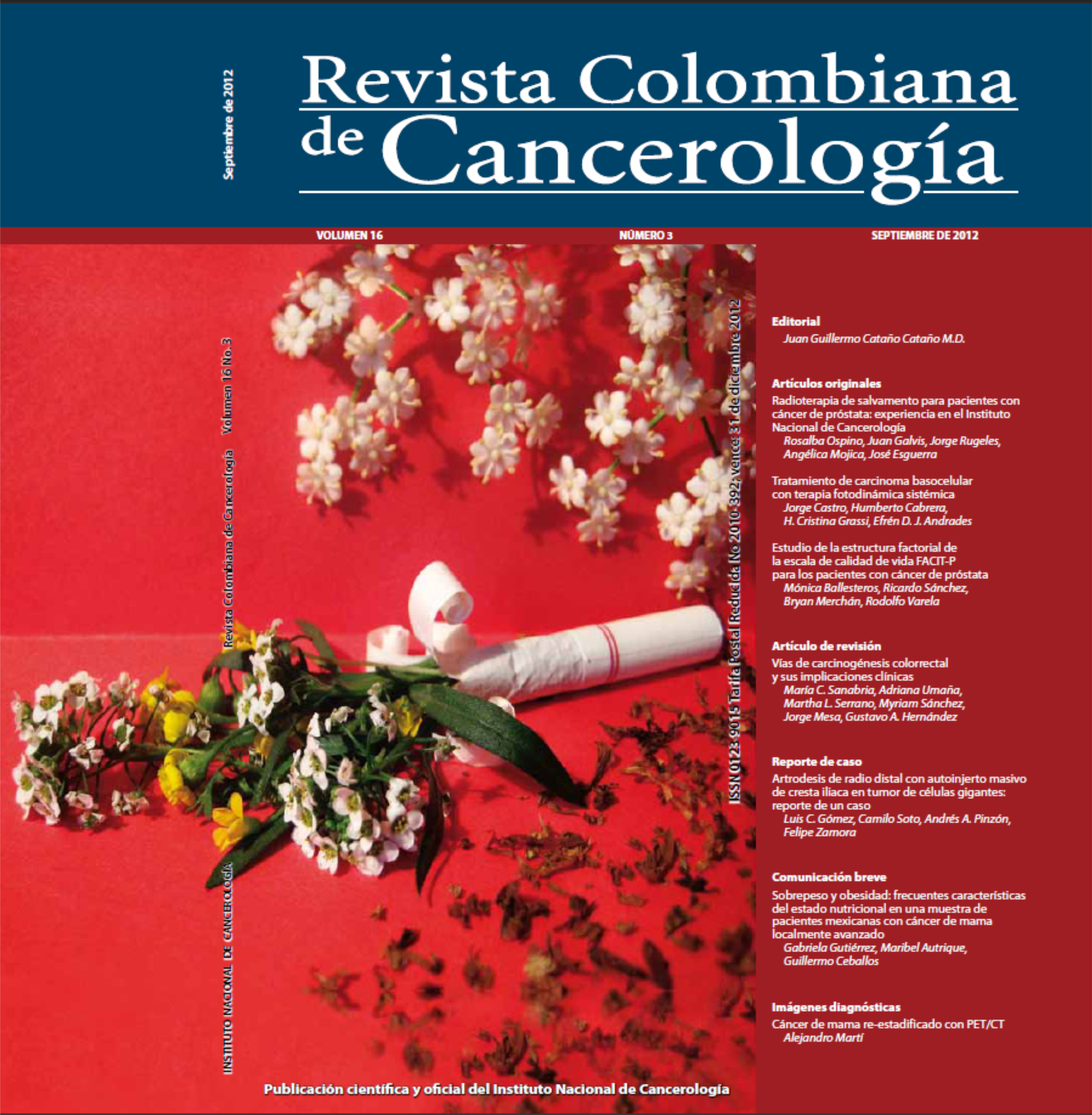Treatment of Basal-Cell Carcinoma with Systemic Photodynamic Therapy
Keywords:
Neoplasms, phototherapy, carcinoma, basal cellAbstract
Objective: To evaluate therapeutic response, among Venezuelan patients, to photodynamic therapy for basal-cell carcinoma with a chlorine-based photo-sensitizer compound.
Methods: Patients included in the study had been diagnosed with single or multiple basal- cell carcinomas, based on histopathology for adults, without gender or lesion localization discrimination, and were injected intravenously with the photo-sensitizer, Photolon. After a 3-hour interval, the tumoral zone (or zones) was illuminated with a 662 nm wave length diode laser.
Results: Treatment was performed on 43 lesions in 16 patients with favorable response in every case; all clinical evidence of tumor(s) disappeared, which was confirmed by histopathology. Patients presented no complications attributable to treatment and remained under observation with no signs of oncologic disease for 24 months.
Conclusions: The efficiency and utility of photodynamic therapy with Photolon was demonstrated in the treatment of Venezuelan patients with multiple basal cell carcinoma lesions.
Author Biographies
Jorge Castro, Servicio Oncológico Hospitalario del Instituto Venezolano de los Seguros Sociales
Unidad de Cirugía Plástica, Servicio Oncológico Hospitalario del Instituto Venezolano de los Seguros Sociales (IVSS), Caracas, Venezuela
Humberto Cabrera, Instituto Venezolano de Investigaciones Científicas
Laboratorio de Óptica Aplicada, Instituto Venezolano de Investigaciones Científicas (IVIC). Mérida, Venezuela
The Abdus Salam International Centre for Theoretical Physics (ICTP), Trieste, Italia
Cristina Grassi, Universidad de Los Andes
Facultad de Farmacia y Bioanálisis, Universidad de Los Andes (ULA), Mérida, Venezuela
Efrén D. Andrades, Universidad de Los Andes
Facultad de Farmacia y Bioanálisis, Universidad de Los Andes (ULA), Mérida, Venezuela
References
Henderson BW, Dougherty TJ. How does photodynamic therapy work? Photochem Photobiol. 1992;55:145-57.
https://doi.org/10.1111/j.1751-1097.1992.tb04222.x
Ackroyd R, Kelty C, Browm N, et al. The history of photodetection and photodynamic therapy. Photochem Photobiol. 2007;74:656-69.
https://doi.org/10.1562/0031-8655(2001)0740656THOPAP2.0.CO2
Allison RR, Sibata CH. Oncologic photodynamic therapy photosensitizers: A clinical review. Photodiagnosis Photodyn Ther. 2010;7:61-75.
https://doi.org/10.1016/j.pdpdt.2010.02.001
Isakau HA, Parkhats MV, Knyukshto VN, et al. Toward understanding the high PDT efficacy of chlorin e6- polyvinylpyrrolidone formulations: photophysical and molecular aspects of photosensitizer-polymer interaction in vitro. J Photochem Photobiol B. 2008;92:165-74.
https://doi.org/10.1016/j.jphotobiol.2008.06.004
Trukhachova TV, Shliakhtsin SV, Cerkovsky DA, et al. A novel finished formulation of the photosensitizer Photolon® for topical application. Evaluation of the efficacy in patients with basal-cell carcinoma of the skin. Photodiagnosis Photodyn Ther. 2011;8:200-1.
https://doi.org/10.1016/j.pdpdt.2011.03.258
Istomin YP, Lapzevicha TP, Chalau VN, et al. Photodynamic therapy of cervical intraepithelial neoplasia grades II and III with Photolon®. Photodiagnosis Photodyn Ther. 2010;7:144-51.
https://doi.org/10.1016/j.pdpdt.2010.06.005
Chin WWL, Paul PWS, Bhuvaneswari R, et al. The potential application of chlorin e6-polyvinylpyrrolidone formulation in photodynamic therapy. Photochem Photobiol Sci. 2006;5:1031-7.
https://doi.org/10.1039/B605772A
Zawirska B. Comparative porphyrin content in tumors with contiguous nonneplastic tissues. Neoplasms. 1979;26:223-9.
Nowis D, Makowski M, Stokłosa T, et al. Direct tumor damage mechanisms of photodynamic therapy. Acta Bioch Polon. 2005;52:339-52.
https://doi.org/10.18388/abp.2005_3447
Castro J, Rincón JN, Gordon PM, et al. Terapia fotodiná- mica: en cáncer de la piel. Rev Venez Oncol. 2007;19:3-19. 11. Morton CA, Burden AD. Treatment of multiple scalp basal cell carcinomas by photodynamic therapy. Clin Exp Dermatol. 2001;26:33-6.
https://doi.org/10.1046/j.1365-2230.2001.00755.x
Friedman RJ, Rigel DS, Nosa R, et al. Clinical oncology. 2a ed. 1995;21:330-41.
Ananthaswamy HN, Pierceall WE. Molecular mechanisms of ultraviolet radiation carcinogenesis. Photochem Photobiol. 1990;52:1119-36.
https://doi.org/10.1111/j.1751-1097.1990.tb08452.x
Hoeijmakers JH. Genome maintenance mechanisms for preventing cancer. Nature 2001; 411:366-74.
https://doi.org/10.1038/35077232
Fitzpatrick TB. The validity and practicality of sun-reactive skin types I through VI. Arch Dermatol. 1988;124:869-71.
How to Cite
Downloads
Downloads
Published
Issue
Section
License
Todos los derechos reservados.




